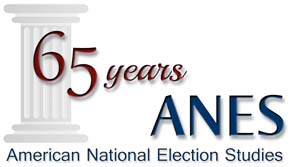Mar 27, 2014 | Innovative Methodology, International, Profile
Post developed by Katie Brown in coordination with Muzammil Hussain.
 This post is a special edition of our researcher profile series. We’re very pleased to welcome Muzammil Hussain to the Center for Political Studies (CPS)!
This post is a special edition of our researcher profile series. We’re very pleased to welcome Muzammil Hussain to the Center for Political Studies (CPS)!
Hussain’s research began in 2005 at University of Wisconsin – Madison, where he completed his Bachelor of Science degree at the School of Journalism and Mass Communication. Intrigued by political communication research, Hussain sought to take the American orientation of the field into parallel domains. In particular, he turned to Bangalore, India – his hometown. Hussain received a fellowship to study the social contexts and consequences of “new media” in Bangalore internet cafes, covering all types of neighborhoods: slums, religious, separated, and class-based. He also applied a variety of methods to his fieldwork in these diverse contexts.
His research interests intensified at the University of Washington, where he relocated in 2008 to pursue his M.A. and Ph.D. in Communication. Over the last three years, Hussain has shifted his research focus to political systems. In particular, his research asks how technology diffusion is a politicized, transnational project. That is, how the deployment of new internet infrastructure not only shapes the ways people use digital media in political ways, but fundamentally how these new opportunities for participation and mobilization are afforded, structured, and regulated by state powers.
His research has culminated in two book projects. Democracy’s Fourth Wave? Digital Media and the Arab Spring (OUP 2013) compares the Arab Spring in depth in 22 nations. State Power 2.0 (Ashgate 2013) is an edited volume that includes scholars from advanced democratic, authoritarian, and emerging democratic nations.
Through his field research and international stays, Hussain has seen first hand the key role state governments play in the evolution of media systems. In the future, he seeks to bring governmental systems, not just social actors, into the equation of his research. Post-internet democracies, Hussain says, are characterized as increasingly technocratic. Comparative analysis shows both advanced democracies and recalcitrant dictatorships treating public information infrastructure in surprisingly similar ways.
Muzammil Hussain is excited to be a member of both the Department of Communication Studies and the Center for Political Studies. He seeks to root his research in the areas of media studies and political communication, while drawing on the comparative ethos of political studies. These lenses allow a more comprehensive picture of comparative digital politics to emerge. Before relocating to Ann Arbor this January, Hussain completed a fellowship at the Qatar Computing Research Institute (Doha, Qatar) investigating digital activism surrounding the post-Arab Spring electoral politics in Tunisia and Yemen.
Mar 24, 2014 | ANES, ANES 65th Anniversary, Elections, Innovative Methodology, National
This is a guest post written by W. Phillips Shively, Professor of Political Science at the University of Minnesota.
 This post is part of a series celebrating the 65th anniversary of the American National Election Studies (ANES). The posts will seek to highlight some of the many ways in which the ANES has benefited scholarship, the public, and the advancement of science. Do you have ideas for additional posts? Please contact us by email ([email protected]) or Twitter (@umisrcps).
This post is part of a series celebrating the 65th anniversary of the American National Election Studies (ANES). The posts will seek to highlight some of the many ways in which the ANES has benefited scholarship, the public, and the advancement of science. Do you have ideas for additional posts? Please contact us by email ([email protected]) or Twitter (@umisrcps).
First and foremost, I can’t really separate ANES, especially in its earliest and most exciting time, from Philip Converse, Donald Stokes, and Warren Miller. Though the large, ongoing dataset is seen as their legacy, it was actually a byproduct of their greatest contribution (after all, there were other large surveys being done at the time, but only theirs became institutionalized like ANES). Their real contribution was research that was breathtakingly creative and rigorous for its time. In the 1960s, when I was in graduate school, they were my gods; if he had ever had a poster, Phil Converse would have been on my dormitory room wall. They pioneered considering the interaction of data from different levels of social organization, analyzing the interplay of historical change and individual behaviors, and applying data analysis to democratic theory. The ANES data set came to be of such importance in the field because they demonstrated the beautiful things that could be done with it.

Converse, Miller, and Campbell developing ANES predecessor the Michigan Election Studies
The high point of my graduate studies was a secondary analysis of the 1956 and 1960 national election studies, to test for various processes by which individuals were influenced in their voting by their community (i.e., an early and very primitive study of contextual effects.) This was pre-computer, so I did it all with IBM cards and a card sorter. It was the most exciting thing I did in graduate school, yet all I was doing was imitating Miller, Converse, and Stokes.
In more recent years, ANES made a huge contribution when Steven Rosenstone took the lead in setting up the ambitious Comparative Study of Electoral Systems (CSES), a cooperative study involving roughly fifty national election studies. He was able to build on years of cooperation between the ANES and international scholars, started especially by Stokes and Converse.
While the Inter-University Consortium for Political and Social Research (ICPSR) now serves a broad inter-disciplinary audience, it was initially a spin-off of the ANES. I attended the summer program in its second year, 1965. It consisted of a single class, co-taught by Stokes and Converse. Each day they opened some exciting new window for us. One day, Stokes introduced us to the problem of cross-level inference, which he had just started work on; I had never heard of it before, and it would become an important part of my work over the next fifty years. Another day they invited a young sociology graduate student, Gudmund Iversen, to come in and talk to us about an interesting new kind of statistics he had just learned of – Bayesian statistics.
Mar 20, 2014 | Current Events, Elections, Innovative Methodology, International
Post developed by Katie Brown in coordination with Kirill Kalinin.

Photo credit: Thinkstock
An earlier post on the Center for Political Studies (CPS) Blog covered Kirill Kalinin’s work concerning election fraud in Russia. That post showed evidence from empirical work that polls ahead of the 2012 Russian presidential election were flawed, setting the stage for subsequent election fraud. This post returns to Kalinin’s work to consider why.
Political Science Ph.D. candidate Kirill Kalinin studies election fraud. Along with Professor of Political Science, Professor of Statistics, and Center for Political Studies Faculty Associate Walter Mebane, Kalinin authored a paper – Understanding Electoral Frauds through Evolution of Russian Federalism: from “Bargaining Loyalty” to “Signaling Loyalty” – arguing that Russia’s election fraud can be understood as rooted in federalism and a formal signaling game model.
Kalinin and Mebane support this argument with empirical analysis. The researchers find that the occurrence of 0s and 5s in the last digit of election turnout percentages to be suspicious. In fact, using statistical modeling, they find it to be linked to election fraud connected with post-election rewards and punishments. From 2000 on, fraud appears to be widespread.
But why? In 2000, Putin came to power and initiated a process of recentralization. From the mid 1990s through the 2000s, regional governors made changes based in rational strategy to Russia’s federal relations.
In the mid-1990s, the central government rewarded governors with political, institutional, and financial resources in exchange for favorable election results. In the 2000s, this escalated to election fraud.
As Kalinin concludes, “Over the most recent election cycles Russian elections have become increasingly unfree and unfair, characterized by suppression of electoral competition, rising levels of administrative interference and drastic growth of electoral frauds.” That is, the rewards for fraud have rendered Russian elections inherently fraudulent.
Mar 18, 2014 | ANES, ANES 65th Anniversary
This is a guest post written by David Redlawsk, Professor of Political Science at Rutgers University and Director of the Eagleton Center for Public Interest Polling.
 This post is part of a series celebrating the 65th anniversary of the American National Election Studies (ANES). The posts will seek to highlight some of the many ways in which the ANES has benefited scholarship, the public, and the advancement of science. Do you have ideas for additional posts? Please contact us by email ([email protected]) or Twitter (@umisrcps).
This post is part of a series celebrating the 65th anniversary of the American National Election Studies (ANES). The posts will seek to highlight some of the many ways in which the ANES has benefited scholarship, the public, and the advancement of science. Do you have ideas for additional posts? Please contact us by email ([email protected]) or Twitter (@umisrcps).
For me, the American National Election Studies (ANES) goes back to my undergraduate days at Duke in the late 1970’s. In my voting behavior class we read The American Voter and The Changing American Voter. I personally did NOT “like” the view of voters from the American Voter, the basic sense that voters were not really competent. So The Changing American Voter, which suggested that voters were more issue-oriented (and thus more competent to hold representatives accountable), appealed to me. Both books were based on ANES data, and I thought it was interesting that they came to different conclusions (of course the argument was that things had “changed” in the late 60’s leading to more issue-oriented voters).
As it turns out, of course, there is a strong critique of The Changing American Voter that comes because the ANES made major question wording and response option changes in 1964 versus prior studies. Bishop, Oldendick, and Tuchfarber (1978a; 1978b), Brunk (1978), and Sullivan et al. (1978) all addressed this issue. For me it made it clear that question design was critical to understanding public opinion.
While my own work has tended to be more experimental, my first journal publication after starting my Ph.D. and after trying other directions for a career, required the ANES in order for us to validate our experimental work. Had we not had the ANES data from which we could construct our Voting Correctly measure, our findings might have remained an interesting (maybe) lab result. Instead they became a core part of our research, both in our APSR paper Voting Correctly (Lau and Redlawsk, APSR 1997) and our book How Voters Decide (Lau and Redlawsk, 2006, Cambridge University Press), both of which have been received with some interest in the discipline.
As I transitioned to doing more survey research and directing the survey center at the Eagleton Institute of Politics, the basic things I learned about question design from the ANES have been important to my work. Overall, ANES has benefited my research and teaching.
Mar 13, 2014 | ANES, ANES 65th Anniversary, Elections
Post developed by Katie Brown and Morris P. Fiorina.
 This post is the first in a series celebrating the 65th anniversary of the American National Election Studies (ANES). The posts will seek to highlight some of the many ways in which the ANES has benefited scholarship, the public, and the advancement of science. Do you have ideas for additional posts? Please contact us by email ([email protected]) or Twitter (@umisrcps).
This post is the first in a series celebrating the 65th anniversary of the American National Election Studies (ANES). The posts will seek to highlight some of the many ways in which the ANES has benefited scholarship, the public, and the advancement of science. Do you have ideas for additional posts? Please contact us by email ([email protected]) or Twitter (@umisrcps).
Ahead of the 2012 Presidential election, Morris P. Fiorina, who is the Wendt Family Professor of Political Science at Stanford University and Senior Fellow at the Hoover Institution, wrote an op-ed for the New York Times.
In the article, Fiorina used American National Election Studies (ANES) data to consider the role of the personal qualities of candidates in election outcomes. Fiorina referenced a research report published in the British Journal of Political Science (with Samuel Abrams and Jeremy Pope) after the 2000 presidential election in the United States. The report sought to explain Al Gore’s defeat in the election during a time of peace and prosperity. The report utilized a battery of questions from the ANES that asks respondents to detail what would make them vote for or against each candidate. The authors coded the respondents’ responses to measure candidates’ personal qualities.
What was the relationship between this rating of candidates’ personal qualities and election outcomes? Looking at thirteen elections from 1952 to 2000, Fiorina and his colleagues found that in four elections the electorate gave a noticeable edge to one of the candidates, but the outcomes were not what pundits would have expected. For example, the highest rated Democratic candidate was Jimmy Carter, who lost to the lowest rated Republican candidate, Ronald Reagan, in 1980. And the lowest rated Democratic candidate was Bill Clinton, who won a landslide re-election in 1996.
In the op-ed, based on these findings, Fiorina challenged those citing Romney’s likability deficit relative to Obama as an unlikely cause of the election outcome. As Fiorina wrote, “If Romney loses, it will be because the public believes that Obama has done a good enough job to continue or that Romney has not advanced a credible recovery program. ‘Voters didn’t like my personality’ is a loser’s excuse.”
In subsequent media interviews, Fiorina emphasized how the ANES, funded by the American National Science Foundation (NSF), is far more than another database; it is a 60 year political history of electoral politics in the US. As Fiorina commented, “ANES provides an accurate history of modern American politics, as seen through the eyes of voters at the time, not filtered through the lenses of academic historians or biased journalists.”
 This post is a special edition of our researcher profile series. We’re very pleased to welcome Muzammil Hussain to the Center for Political Studies (CPS)!
This post is a special edition of our researcher profile series. We’re very pleased to welcome Muzammil Hussain to the Center for Political Studies (CPS)!



